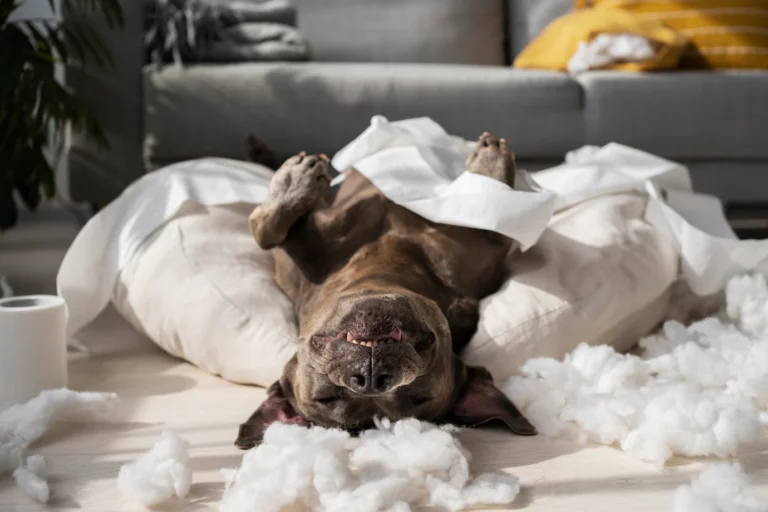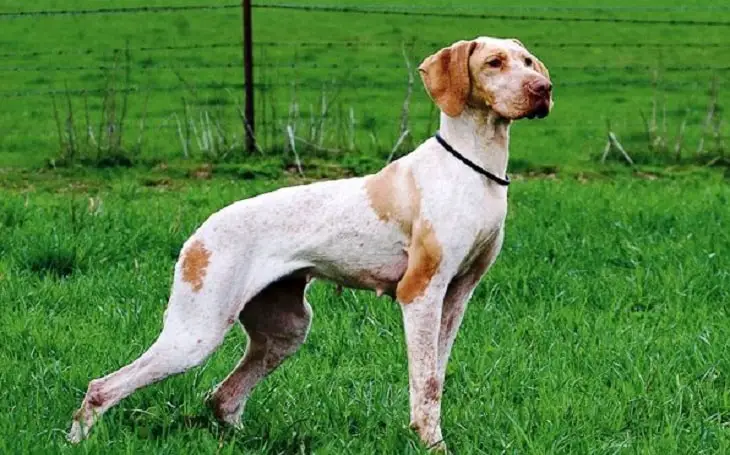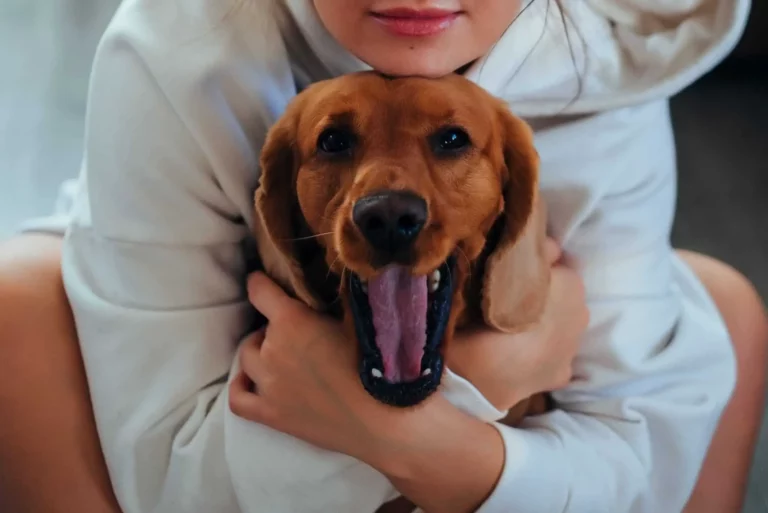Do Dogs Bleed After Mating: What You Need to Know
Mating is a natural process for dogs, but you might be wondering, do dogs bleed after mating? This blog post will provide detailed information on this topic, helping you understand the reasons for bleeding and what you can do to ensure your dog’s health.
Key Takeaways
Bleeding after mating in dogs can be caused by:
Tying or copulatory lock
Microscopic injuries to genital tissues
Pre-existing medical conditions
Tying is a natural part of the mating process, lasting 5 to 30 minutes on average.
Minor injuries during mating usually heal on their own, but it’s essential to monitor your dog and keep the area clean.
Pre-existing medical conditions, such as uterine issues, urinary tract infections, or pyometra, may cause bleeding after mating.
Monitor your dog’s condition, gently clean the area, and consult your veterinarian if bleeding persists, worsens, or is accompanied by other concerning symptoms.
Understanding Bleeding After Mating in Dogs
Bleeding after mating in dogs is a concern for many pet owners. It’s essential to understand the reasons behind this occurrence, as well as the appropriate actions to take to ensure your dog’s health and well-being. In this section, we will discuss three primary reasons for bleeding after mating:
- Tying or copulatory lock: This is a natural phenomenon that occurs during the mating process, where the male dog’s penis swells inside the female dog’s vagina, creating a temporary “lock.” This lock helps ensure successful fertilization but can also cause some bleeding.
- Microscopic injuries to genital tissues: During mating, the friction between the dogs’ genitals can lead to small abrasions or injuries. These injuries can result in minor bleeding but typically heal on their own.
- Pre-existing medical conditions: In some cases, bleeding after mating might be an indication of an underlying medical issue. Conditions such as uterine or vaginal problems, urinary tract infections, or pyometra (a severe infection of the uterus) can result in bleeding after mating.
By understanding these potential causes, you’ll be better equipped to monitor your dog’s condition and determine if veterinary care is necessary. In the following sections, we will delve deeper into each of these causes and provide guidance on how to handle bleeding after mating.
Tying – The Copulatory Lock in Dogs
One of the primary reasons dogs may bleed after mating is due to the process of “tying” or the “copulatory lock.” This natural phenomenon is essential for successful reproduction, but it can also cause some discomfort and bleeding. In this section, we will discuss what tying is, why it occurs, and how long it lasts.
What is tying?
Tying is a natural part of the canine mating process. During mating, the male dog’s penis swells inside the female dog’s vagina, creating a temporary “lock.” This lock ensures that the male’s sperm has the best chance of reaching the female’s eggs for successful fertilization.
Why does tying occur?
Tying occurs to maximize the chances of successful reproduction. The copulatory lock helps keep the male’s sperm inside the female’s reproductive tract, increasing the likelihood of fertilization. Additionally, tying discourages the female dog from mating with other males while she is still fertile, increasing the original male’s chances of fathering her offspring.
How long does tying last?
The duration of the copulatory lock varies from one mating pair to another. On average, tying can last anywhere from 5 to 30 minutes. During this time, the dogs might try to change positions or even move around while still connected.
It’s crucial to remain calm and allow the dogs to separate naturally, as forcibly separating them can cause injuries and further bleeding.
While tying is a normal part of the mating process, it can sometimes cause minor bleeding due to the swelling and pressure on the female dog’s genital tissues. However, this bleeding is typically short-lived and should not be a cause for concern.
Injuries During Mating
Another reason dogs may bleed after mating is due to microscopic injuries that occur during the mating process. While these injuries are typically minor, it’s essential to be aware of the potential risks and know how to care for your dog in case of any abrasions.
In this section, we will discuss the types of injuries that can occur, prevention methods, and when to consult a vet.
Abrasions and Small Injuries
During mating, the friction between the dogs’ genitals can cause small abrasions or injuries to the delicate tissues. These injuries may result in minor bleeding, which should resolve on its own within a short period. In most cases, these injuries are not a cause for concern and will heal naturally.
Prevention and Care
To minimize the risk of injuries during mating, ensure your dog is properly prepared for the process. Provide a calm and comfortable environment to reduce stress and anxiety, which can exacerbate the risk of injury. Additionally, allowing your dog to mate only with a suitable partner can help prevent potential injuries.
If you notice bleeding after mating, monitor your dog’s condition closely. Keep the area clean by gently wiping it with a warm, damp cloth, and avoid using any harsh chemicals or products that could irritate the sensitive tissues further.
If the bleeding worsens or does not resolve within a day, consult your veterinarian for further advice.
When to Consult a Vet
While minor injuries typically heal on their own, it’s essential to know when to seek professional help. If the bleeding persists or worsens, or if you notice signs of infection such as swelling, discharge, or a foul odor, contact your veterinarian immediately.
Your vet can assess your dog’s condition, determine the cause of the bleeding, and provide appropriate treatment to ensure your pet’s health and well-being.
Pre-existing Medical Conditions
In some cases, bleeding after mating may be an indication of an underlying medical issue. As a responsible pet owner, it’s crucial to be aware of the potential health problems that can cause bleeding and know when to seek veterinary care.
In this section, we will discuss three common medical conditions that can result in bleeding after mating: uterine and vaginal issues, urinary tract infections, and pyometra.
Uterine and Vaginal Issues
Dogs with pre-existing uterine or vaginal problems may be more prone to bleeding after mating. Conditions such as inflammation, polyps, or tumors can cause the delicate tissues in the reproductive tract to bleed more easily.
If you suspect your dog has a uterine or vaginal issue, consult your veterinarian for a thorough examination and appropriate treatment.
Urinary Tract Infections
Urinary tract infections (UTIs) can cause symptoms similar to bleeding after mating, such as blood in the urine or discharge from the genital area. If your dog is experiencing a UTI, they may also exhibit other symptoms like frequent urination, straining to urinate, or licking the genital area excessively.
If you suspect your dog has a UTI, consult your veterinarian for diagnosis and treatment.
Pyometra
Pyometra is a severe infection of the uterus that can be life-threatening if left untreated. Bleeding after mating can be an early sign of pyometra, especially if it occurs along with other symptoms like fever, lethargy, vomiting, or loss of appetite.
If you suspect your dog has pyometra, seek veterinary care immediately, as this condition requires prompt treatment, often including surgery.
If you notice bleeding after mating and suspect an underlying medical condition, consult your veterinarian for a proper assessment and treatment plan. Early intervention can help prevent complications and ensure your dog’s health and well-being.
In the next section, we will discuss how to handle bleeding after mating and what steps to take to care for your dog during this time.
How to Handle Bleeding After Mating
When you notice bleeding after mating, it’s essential to know how to handle the situation and care for your dog appropriately. Here’s some guidance on monitoring your dog’s condition, cleaning the area, and determining when to consult your veterinarian.
Monitor Your Dog’s Condition
After noticing bleeding, keep a close eye on your dog’s condition. In most cases, the bleeding will be minor and resolve on its own within a short period. However, if the bleeding worsens, persists, or is accompanied by other concerning symptoms, it may be necessary to consult your veterinarian for further advice.
Clean the Area Gently
To help prevent infection and keep your dog comfortable, gently clean the area around the genitals with a warm, damp cloth. Be careful not to use any harsh chemicals or products that could irritate the sensitive tissues further.
If you notice any signs of infection, such as swelling, discharge, or a foul odor, contact your veterinarian.
Consult Your Vet if Bleeding Persists or Worsens
While minor bleeding after mating is typically not a cause for concern, it’s essential to know when to seek professional help. If the bleeding does not resolve within a day, worsens, or is accompanied by other concerning symptoms, consult your veterinarian.
Your vet can assess your dog’s condition, determine the cause of the bleeding, and provide appropriate treatment to ensure your pet’s health and well-being.
In conclusion, understanding how to handle bleeding after mating in dogs is crucial to ensuring your pet’s health and comfort. By monitoring their condition, gently cleaning the area, and knowing when to consult your veterinarian, you can provide the best care for your furry friend during this time.
Frequently Asked Questions
Is bleeding after mating a sign of pregnancy?
No, bleeding after mating is not a sign of pregnancy. Bleeding can occur due to various reasons, such as tying, injuries, or pre-existing medical conditions.
How long should I expect my dog to bleed after mating?
Bleeding after mating is usually short-lived, lasting only a few hours to a day. If the bleeding persists or worsens, consult your veterinarian.
Can my dog get an infection from bleeding after mating?
While it’s rare, dogs can potentially develop infections due to bleeding after mating. If you notice any signs of infection, such as swelling, discharge, or foul odor, contact your veterinarian.
How can I prevent my dog from bleeding after mating?
To minimize the risk of bleeding, ensure your dog is properly prepared for mating by providing a calm environment and allowing them to mate only with a suitable partner. Additionally, keep an eye on your dog during the process to prevent any potential injuries.
Should I be concerned if my dog doesn’t bleed after mating?
No, not all dogs bleed after mating. If your dog doesn’t bleed, it’s not necessarily a cause for concern. However, if you notice any other unusual symptoms or behavior, consult your veterinarian for further advice.
Conclusion
Understanding the reasons for bleeding after mating in dogs is essential to ensuring your pet’s health and well-being. By being aware of the causes, monitoring your dog’s condition, and knowing when to consult your veterinarian, you can help your furry friend have a safe and healthy experience.






